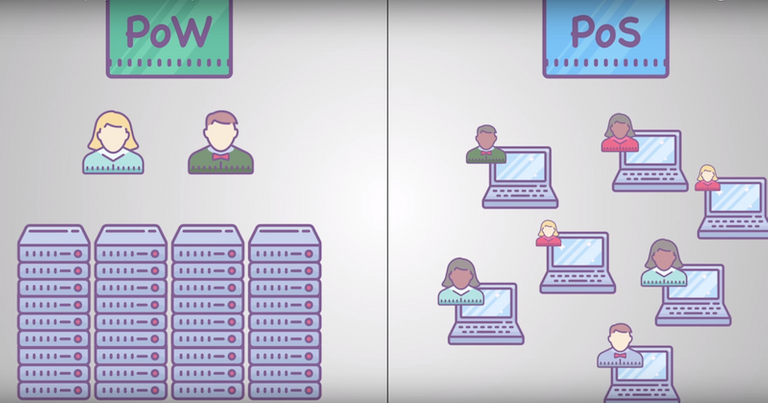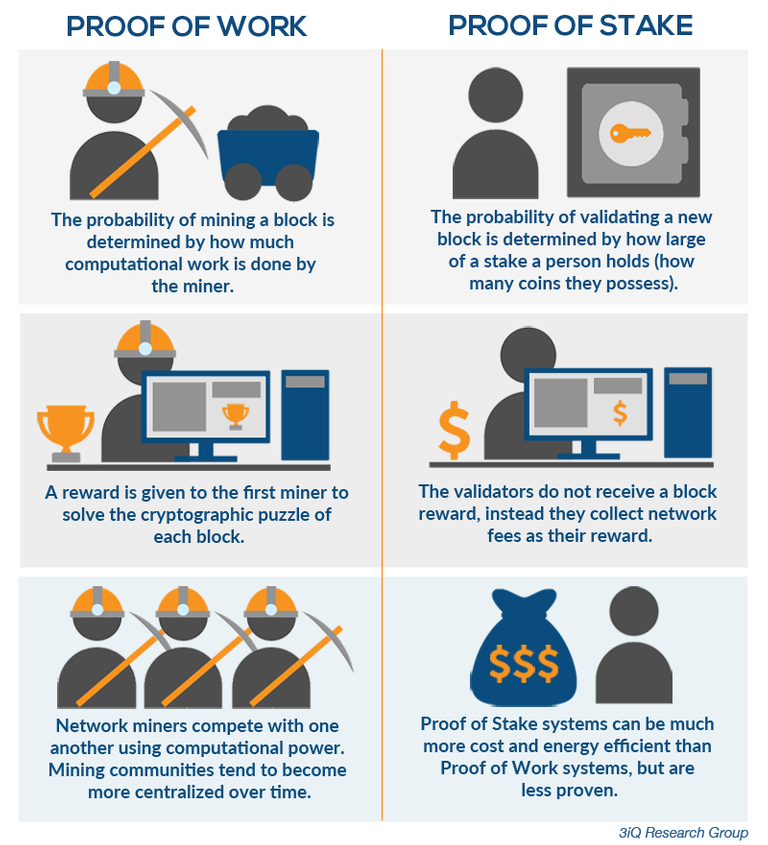Cryptocurrencies mean different things to different people. For some they are an economic system that enables digital scarcity in system such as Bitcoin + Bitcoin Cash. For others they are simply a tool to achieve decentralized consensus. This post digs further into achieving decentralized consensus compared to an economic system.
Decentralized consensus stems from the solving of the Byzantine Generals’ Problem. In simple terms, it gets a decentralized computer network to agree with each other (consensus) even when their are bad computers in the network trying to mess it up.
Proof of work solves this problem by making the generals expend energy competing to solve cryptographic puzzles. The general that solves the puzzle gets to broadcast his plans to the other generals. This works because bad generals are not going to spend the time and energy competing to solve puzzles so they can broadcast their malicious content. Essentially making the system too expensive to attack.
Proof of stake solves the problem in a different way. Instead of solving puzzles the generals must put up some of their valuable coins as collateral for being a good actor. The more collateral a general puts up, the more he gets to broadcast his information as it is less likely he will spread malicious content. Generals that get caught spreading malicious content get their collateral taken from them. This again makes it expensive to attack the system as in order to steal, you might just get your stake taken away.
So once the Byzantine Generals’ Problem was solved first via Nakamoto Satoshi, new variations of that solution appeared and get to compete. This is where we are today with proof of work, proof of stake, and different decentralized consensus mechanisms.

History
When cryptocurrencies first came into existence through Bitcoin, there existed only three methods through which you could get some. Either you mined it, purchased it or were given some by someone. Mining is a process through which new coins were created and released into the public ledger (blockchain). The profit received from mining includes the transaction fees from accumulated transactions in the block as well as the new coins created. Mining was a requirement for the proof-of-work algorithms which when solved, led to the creation of new blocks.
Later, the proof of stake algorithm became popular and has worked its way into a larger number of cryptocurrencies. The staking of digital assets could be considered as the “mining of the future”. The aim of this articles is to come up with some differences and similarities between mining and staking.
WHAT DO WE MEAN WHEN WE TALK ABOUT MINING AND STAKING?
MINING
In order to carry out mining, it is mandatory that we be in possession of the computational power as well as the required technical know-how in order to crack the blockchain networks’ algorithmic puzzles. You can choose to mine alone or join other miners in order to make this process easier
Even though a lot of people are aware of the fact that there is a process known as mining as well as the required hardware, only a few of them know of staking and the advantage which comes with it.
STAKING
Staking is a process which involves the buying and holding of cryptocurrnecy in your wallet for a given period of time. This is according to the Proof of Stake (PoS) algorithm which many new cryptocurrencies consider to be the basis. This is the same as a fixed deposit in the non-digital currency world.
You are awarded additional coins by the PoS which is the same as the profits earned from a fixed deposit at the end of the period during which the contract considered the deposit as fixed. When you hold coins, the network rewards you for your support. Therefore, there will be an increase in the number of coins you possess depending on the duration of time for which you held the coins in your wallet.
Reward Rates
Reward rates depend on the maturity period or duration chosen to “fix” coins in an investors wallet. Even though several cryptocurrencies have alternative rules and rates, there is no change in the mechanism.
Therefore, the reward increase when you hold the coin in your wallet for a longer period of time.
For Example
- When you hold the coins for 3 months the reward is +20%
- When the coins are held for 6 months the reward is +50%
- When the coins are held for 12 months the reward is +100%
Listed below are higher-stake coins we selected and the link to their various wallets.
| Coin | Annual Interest | Exchange |
|---|---|---|
 PIVX PIVX | Approximately 5% | Btcpop |
 Sproutcoin Sprts Sproutcoin Sprts | Approximately 720% | Btcpop |
 HoboNickels HBN HoboNickels HBN | Approximately 100% | Btcpop |
 HyperStake HYP HyperStake HYP | Approximately 750% | Btcpop |
 Orbitcoin ORB Orbitcoin ORB | Approximately 500% | Cryptsy |
 TEKcoin TEK TEKcoin TEK | Approximately 500% | Cryptsy |
 Novacoin Novacoin | Approximately 33% | BTC-E |
 Diamond DMD Diamond DMD | Approximately 50% | Cryptsy |
BENEFITS OF STAKING
- The number of coins possessed increases in proportion to the increase in rewards and once the coin appreciates, the value of your wallet appreciates too.
- There is no need to dispense cash on machines such as the high-end GPUs and ASICS.
- You can use the cash you had to use to purchase mining machinery to purchase more coins and stake them. This will eventually lead to increase in value and balance.
- Fewer resources are used when staking a compared to the resources uses by PoW (Proof of Work) and mining. This means there is less consumption of electricity and no need for additional machinery when staking.
- Considering the fact that the holder of the coin is motivated by the profit to hold them instead of selling them, the price of such coins will be very stable.
- You do not need to have any technical experience to participate in staking.
DEMERITS OF STAKING
- However, once a coin is staked, it is impossible for you to sell that particular coin until the stipulated staking period has elapsed.
- The security model is not as old or proven to work as well as proof of work
To conclude, the Proof of Stake strategy saves energy and lowers barriers to entry. So money being spent buying hardware and electricity, can be spent on development and other initiatives. While this is a benefit, it could also lead to be a flaw as that expense in POW mining is in fact what makes that system so secure. So keep that in mind when using POS cryptocurrency.
Coins mentioned in post: